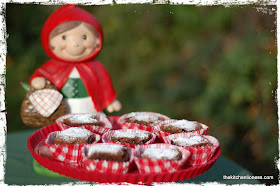There is no such thing as celebrating the Holiday Season in Germany without a visit or two or even more to a traditional German Christmas market. Strolling through festively decorated and illuminated streets, taking rides on old-fashioned carousels, buying handmade Christmas decoration, listening to German Christmas carols, and drinking hot spiced wine; Christmas markets are a traditional and fun part of every Christmas season in Germany.
German Christmas markets date back to the 14th century. Originally, the fairs provided only food and practical supplies for the cold winter season, but soon the markets became a beloved holiday tradition and a great way to get into the Christmas spirit.
Christmas markets are the perfect place to find a unique Christmas gift, such as handmade wooden or tin toys, Christmas glass or wooden ornaments and decorations, whimsical pottery, woolen gloves, interesting jewelry, handmade soaps, beeswax candles, cookie cutters, spices, honey, handmade brooms, and lots more.
And no visit to a German Christmas market is complete without sampling some Christmas treats, such as
“Stollen” (a traditional German Christmas bread with dried fruits, nuts, spices, and lots of powdered sugar icing),
“Glühwein” (mulled wine), traditional
“Bratwurst” (various charcoal-grilled sausages),
“Lebkuchen” (gingerbread cookies),
“Gebrannte Mandeln” (roasted sugar-coated almonds) and
“Maronen” (roasted chestnusts).
Almost every city celebrates with at least one Christmas market and we will be attending a few different ones in the next couple of weeks. Most Christmas Markets start in the last week of November and run through to Christmas Eve or a day or two before.
In order to celebrate the official start of the festive season, I am posting my first recipe for
Christmas cookies. These cookies are called
“Welser Blumen”, an old-fashioned buttery Christmas cookie filled with some wonderful (maybe homemade) jelly or jam and with the traditional “Linzer Cookie cut-out look”.
Recipe for the “Welser Blumen”
Ingredients
125 grams unsalted butter,
70 grams powdered sugar
1 egg yolk, (M)
2 tbsp cold milk
the zest of an organic lemon
150 grams AP/plain flour
100 grams potato starch
1 1/2 tsp baking powder
1 egg white (M)
20 grams homemade jam or jelly (I used sour cherry jelly)
Preparation of the Cookies
1. In a medium skillet, melt the butter. Once melted, add the powdered sugar, egg yolk, milk and lemon zest.
2. Transfer to a large bowl of your mixer.
3. In a large bowl, whisk together the flour, potato starch and baking powder.
4. Add the flour mixture to the butter mixture and mix until you have a smooth, homogenous dough.
5. Divide the dough into two parts and flatten each part into a round. Wrap each with plastic wrap, and refrigerate until firm, at least one hour or overnight.
6. The next day, preheat your oven to 175 degrees Celsius and cover two baking sheets with Silpats or parchment paper.
7. Taking one dough disk at a time, roll out the dough on a lightly floured surface and using a cookie cutter of your choice, cut out cookies and transfer to the baking sheets. Using a smaller cutter, cut the centers out of half of the cookies. Repeat rolling and cutting with the other half of the dough. Combine the scraps from both batches, reroll and cut.
NOTE: For each cookie, you will need one with and another one without the cutout in the center of the cookie – if you have a
Linzer Cookie Cutter, this is a good time to use it!
8. To give the baked cookies a glossy look, brush the unbaked cookies with a lightly beaten egg white
9. Bake until the edges are golden, 8 to 10 minutes.
10. Remove from the oven and place on wire racks until completely cool.
11. Spread a scant tablespoon of jam on the bottoms of each cookie, and sandwich with the cut-out tops!
This is the first one of my festive recipes and there will be lots more such as a recipes for traditional
“Lebkuchen”,
“Stollen” and
“Glühwein” and lots of pictures from our visits to our favorite Christmas Markets – I hope you will enjoy my seasonal posts in the next few weeks!















































